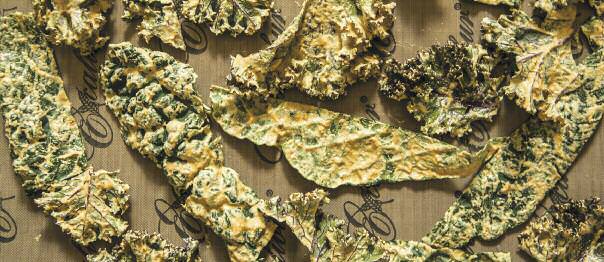cover
PRESERVE NATURE’S FLAVORS
Dehydration extends the life of summer’s bounty.
WRITTEN BY LAUREL WINTERBOURNE
PHOTOS BY TREVOR CLARK
Garden harvests, CSA boxes, and farmers’ markets are the highlight of summer feasts, but when the first taste of fall arrives, you’re likely to find yourself with more bounty than you know what to do with. Savor the summer flavors year round by dehydrating fruits, vegetables, and herbs. Flavors intensify in the dehydration process, making that ripe summer tomato even more flavorful in your fall soup, while still preserving the vitamins and minerals.
If you don’t have a garden, take advantage of produce sales at the grocery store or buy in bulk without worrying whether you can eat 30 bananas before they go bad. Buying dehydrated produce and dried herbs can be expensive. Dehydrating at home allows you to enjoy rich flavors all year, for a fraction of the price.
Add zing to cuisine
Dehydrated foods take on new textures and bold flavors, and they’re a fun way to get creative with food. Chef William Burns of Moody’s Bistro Bar & Beats in Truckee adds distinctive flair to his dishes by dehydrating morel mushrooms, grinding them up, and using them as seasoning for fish or sauces. He also dehydrates strawberries and tomatoes, grinds them into powder, and uses them for garnish, adding pops of flavor to dishes.
“We’ve used a dehydrator, but we also use our pizza oven by heating it to a low temperature of 110 to 120 degrees (F) and putting items on a tray and leaving them overnight,” Burns says.
Dehydration guide
Truckee home cook and dehydration aficionado Mallori Knoblich has learned a few tips for creating dehydrated foods successfully, while also maintaining the nutrients of raw foods. She recommends blanching foods before dehydrating them, to kill organisms that can cause spoilage. She also sprouts nuts, seeds, grains, and legumes by soaking overnight before dehydrating, to get the greatest health benefits out of her food.
Knoblich sets her dehydrator to 112 degrees F, which takes longer but preserves the vitamins and enzymes of the raw food. Many people dehydrate at higher temperatures, but like with cooking, nutrients break down when foods are heated above certain temperatures.
One of her favorite tips is to put the dehydrator in a neutral odor area because the food can absorb ambient smells. No one wants apples that taste like dryer sheets.
Writer Laurel Winterbourne loves the health and flavor benefits of dehydrating food and can’t wait to try Knoblich’s kale chips recipe.
Extras
Dehydration Tips
Start small, or go big.
If you are new to dehydrating and wary of the initial investment, you may use your oven to experiment and decide whether dehydration is for you. The oven is perfect for dehydrating fresh herbs — it’s as simple as placing them on a baking sheet in the oven at the lowest temperature for two to four hours with the oven door propped open a few inches. The downside is that the oven is less energy efficient than a dehydrator.
Top-of-the-line dehydrators, such as the Excalibur 9-Tray Dehydrator (http://www.Excaliburdehydrator.com ), can be pricy, ranging from $200 to $400, but quickly pay off when you are able to enjoy homegrown dehydrated strawberries in November at a fraction of grocery-store prices. If you plan on dehydrating food regularly, this is an excellent option.
Less-expensive dehydrators are great for those who want to experiment without the financial commitment. The Ronco 5-Tray Food Dehydrator (http://www.Ronco.com ) is a good option and retails for about $40.
Recipe
Dehydrated Kale Chips
(courtesy of Mallori Knoblich. Serves 2 to 4)
1 head kale
1½ cups raw cashews
½ lemon, juiced
¼ cup tahini
1 whole red bell pepper
½ cup nutritional yeast
1 to 2 teaspoons curry powder, to taste
Sprout cashews overnight by soaking in water.
Wash kale leaves and remove ribs. Tear into large pieces, three to four inches long. In blender, mix cashews, lemon juice, tahini, bell pepper, and nutritional yeast. Add curry powder to taste.
Put kale in bowl and toss with cashew sauce until coated. Put kale pieces on nonstick tray and spoon additional sauce where needed. Place kale in dehydrator at 112 degrees F and check after eight hours. It may take anywhere from eight to 48 hours due to low temperature. If using oven, set to lowest temperature possible, prop open a few inches, and check every two hours. Once kale feels crispy and most moisture is removed, kale chips are ready to serve.
Dehydrated Cinnamon Apples
(courtesy of Mallori Knoblich. Serves 2)
2 apples
Cinnamon, to taste
Core apple with knife or apple corer. Slice apples into thin pieces (about one centimeter thick or less); the thicker the slice, the longer it will need to dehydrate. Sprinkle with cinnamon. Dehydrate at 112 degrees F for 24 hours. It’s important to check on apples every few hours. All dehydrators are different. Apples are done when they feel dry.


